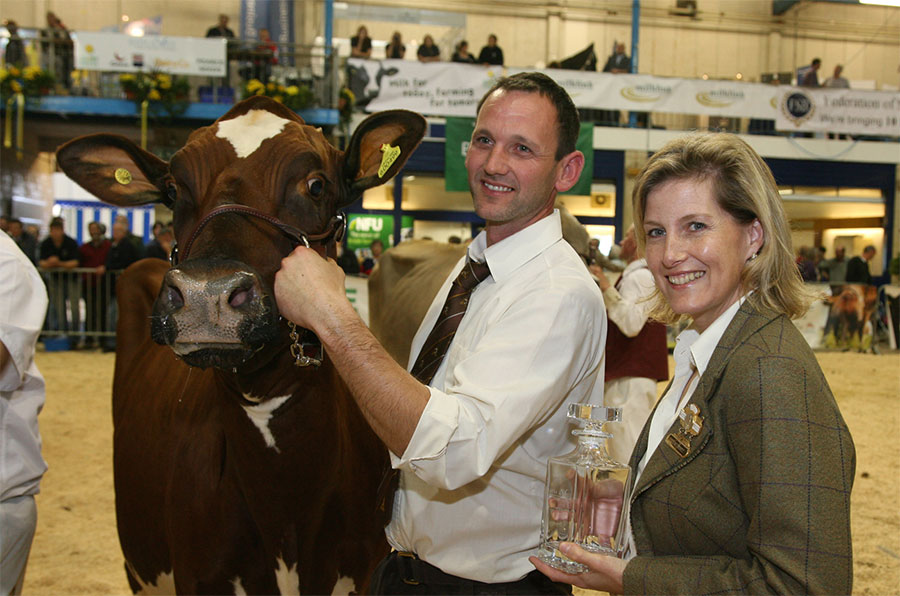
Calf showing can sometimes be seen as a poor relation compared to the excitement of dairy interbreed championships – but it is the foundation on which the future is built. And dairy farmers would do well to pay attention to the calf classes at the Dairy Show in October, as they will comprise the best every breed has to offer.
Duncan Hunter, whose family have been breeding Ayrshire cattle for generations, is judging this year’s calf classes, and reckons there is a lot more to showing than just good-looking animals. “Producers come along to see what a breed can offer, whether they have pedigree herds or not,” he says.
“There are a lot of crossbreeding programmes now, and in the ring you can see what type of animal you will get from each breed. You can also see what they’re capable of in terms of yield, milk constituents and fertility.”
But when it comes to judging calves, the decision-making is all about the potential of the animal, says Mr Hunter. “You’re looking for a calf that is balanced and functional – size isn’t everything. It’s about the animal being correct and in proportion, with clean bones, dairy potential, and strength. A dairy calf that’s weak in the front end will always be weak.”
When comparing different breeds, Mr Hunter is looking for an animal that really excels within its sphere. “They all have different characteristics, so you’re looking for the best of the best.”
But it’s not all about the animal. “There are always young handlers with the calves and they need encouragement and support,” he says. “It fills me with warmth to see what and who is coming through for the future.”
Although Mr Hunter sold his Haresfoot milking herd in 2011 in an effort to slow down a bit, he is still breeding Ayrshires in Hertfordshire using embryonic transfer. “During my time in milking I was fortunate enough to have bred some very good families, which helped me to achieve high yields and showing success. I’m still keeping my hand in by importing embryos from Canada, Australia and America, using Simmental and Angus recipients,” he says.
“I’m breed manager for the Ayrshire Cattle Society, and this way I can bring new genetics into the UK, without having to milk cows – I just rear them to show age and then sell them.”
In recent years, there has been a resurgence in interest in Ayrshire cows, but Mr Hunter is not biased in the judging ring. “Commercial dairy farmers increasingly want ease of management, longevity, health and better milk quality. And I love being able to promote different breeds in the show ring, and commend breeders on what they’ve done,” he says. “Every exhibitor has brought their best cattle to the show, so we must do all we can to encourage them.”
So what have been the highlights of Mr Hunter’s career? “When I was showing myself, winning the interbreed championship at the Dairy Show in 2010 was fantastic. I was presented my trophy by the Countess of Wessex, to whom – not realising who she was – I had offered a drink while having a party in the cattle lines the night before. But in my judging career, the national show in Finland was probably the best so far. There were nearly 200 Ayrshires to judge – it was just amazing.”
